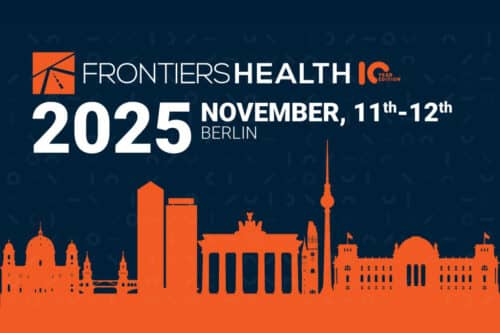By Léon Van Wouwe, Clinical Innovation Director, Volv Global
Introduction
Progressive Pulmonary Fibrosis (PPF) is a severe clinical condition emerging from various fibrosing interstitial lung diseases (ILDs). PPF is characterised by ongoing fibrosis and relentless functional decline despite treatment efforts. Although increasingly recognised, patients continue to encounter significant challenges, including delayed diagnoses, limited therapeutic interventions, and inadequate monitoring. By enhancing patient identification and refining targeted interventions, we can significantly shift outcomes and improve lives.
1. Diagnostic Challenges: An Elusive Phenotype
Diagnosing PPF remains complex. The condition can originate from multiple ILD subtypes, including idiopathic pulmonary fibrosis (IPF), hypersensitivity pneumonitis, and autoimmune-related lung diseases. Also, overlapping clinical presentations often mask the specific diagnosis, delaying referrals to specialist respiratory care.
Patients frequently experience prolonged cycles within primary and general pulmonary care, with breathlessness worsening progressively before ILD suspicion is raised. Additionally, inconsistent access to multidisciplinary teams (MDTs) and variability in adherence to guideline-driven evaluations further extend diagnostic uncertainty, during which time fibrotic processes continue to progress.
2. Treatment Challenges: When Disease Control Falls Short
Even following a correct diagnosis, optimal disease management for PPF often remains difficult to achieve. Immunomodulatory therapies frequently fall short of effectively halting fibrosis. Antifibrotic agents, despite availability in certain healthcare systems, are frequently underutilised due to complex regulatory environments, prohibitive costs, clinical uncertainty, or conservative clinical decision-making.
Treatment inertia, driven by hesitation to escalate interventions despite documented disease progression, presents an additional barrier. Poorly defined follow-up protocols and inconsistent lung function monitoring further add to these challenges, leading to missed opportunities for timely therapeutic adjustments.
3. Mapping Challenges to Solutions
| Challenge | Impact | Example Solutions |
|---|---|---|
| Diagnostic Delay | Missed early intervention | Education on ILD indicators, streamlined referral algorithms |
| Overlap with ILDs | Diagnostic ambiguity | Wider MDT access, AI-powered pattern recognition tools |
| Treatment Inertia | Disease progression despite therapy | Explicit escalation guidelines, antifibrotic initiation frameworks |
| Poor Monitoring | Unnoticed disease progression | Automated lung function trend alerts, digital symptom diaries |
| Case-Finding Deficits | Hospitalisation-based detection | AI-driven risk scoring and patient identification |
4. Solutions: Precision Tools to Drive Better Care
Advances in data science, particularly AI-driven healthcare intelligence, present groundbreaking opportunities, for both pharmaceutical companies and healthcare providers alike, helping them address strategic gaps and patient-care challenges in PPF. Specifically:
- Phenotypic Clustering and Trajectory Modelling: Enables early identification by doctors, of patients at high risk of progression by analysing complex real-world data to reveal subtle patterns indicative of disease pathways. Pharma companies can leverage these insights to optimise trial recruitment and personalise treatment plans, directly addressing gaps in trial precision and patient targeting.
-
High-Risk Case Flagging: Accelerates referrals and intervention through AI-enhanced alert systems for healthcare practitioners, ensuring patients most likely to benefit from timely, targeted interventions are identified earlier, thereby maximising therapeutic effectiveness and resource allocation efficiency.
-
Real-time Disease Activity Monitoring: Utilises advanced digital tools for continuous tracking of disease progression, alerting clinicians promptly to suboptimal disease control. This approach supports timely escalation and proactive disease management, addressing treatment inertia by offering clear, actionable data to healthcare providers.
-
Real-World Evidence Generation: Facilitates comprehensive retrospective and prospective analyses of patient outcomes and treatment efficacies. This not only supports regulatory submissions and reimbursement decisions but also provides robust evidence for therapeutic efficacy and economic value, bridging critical gaps in clinical and economic understanding.
By moving from reactive to predictive care, such tools can help transform outcomes for patients often lost in the complexity of ILD management.
Conclusion: A New Collaborative Frontier
Addressing the complexities of PPF demands a shift from reactive to proactive care models, supported by advanced predictive and analytical capabilities. For healthcare providers, adopting AI-driven insights into clinical practice means recognising subtle indicators of progression early and confidently escalating care. Pharmaceutical companies must also engage deeply with these precision tools, supporting their development and integration to ensure timely patient access to targeted therapies and personalised care plans.
By fostering collaboration and integrating advanced AI tools into clinical pathways, we can substantially alter the trajectory for PPF patients, creating a new standard of care that prioritises early diagnosis, targeted intervention, and improved quality of life.
About the author
Léon van Wouwe has 20+ years’ global experience in clinical development and operations, uniting data science with pharma and research. He drives cross-functional collaboration to advance innovative treatments.
Links:
Volv Global: We find more of the right patients










